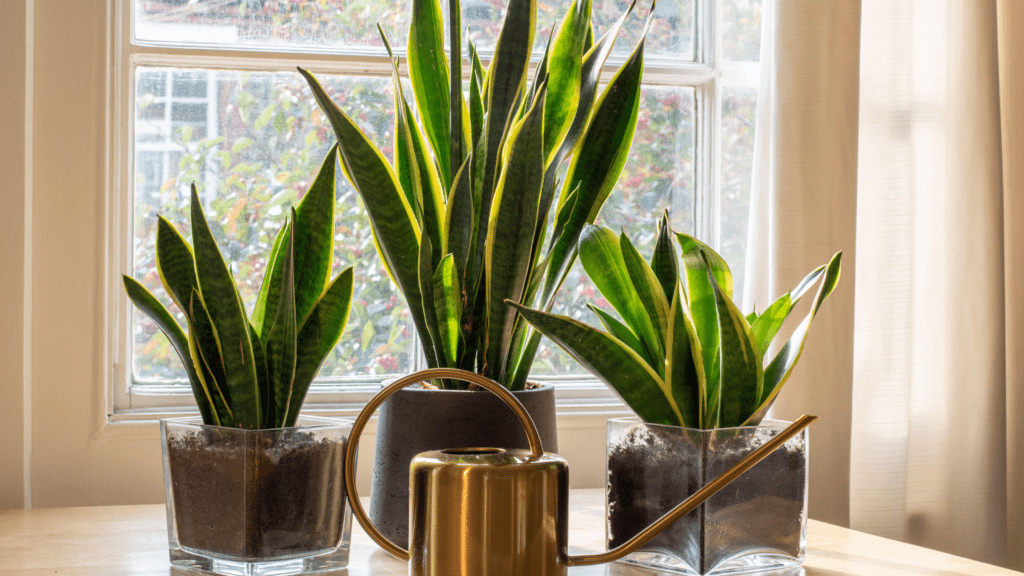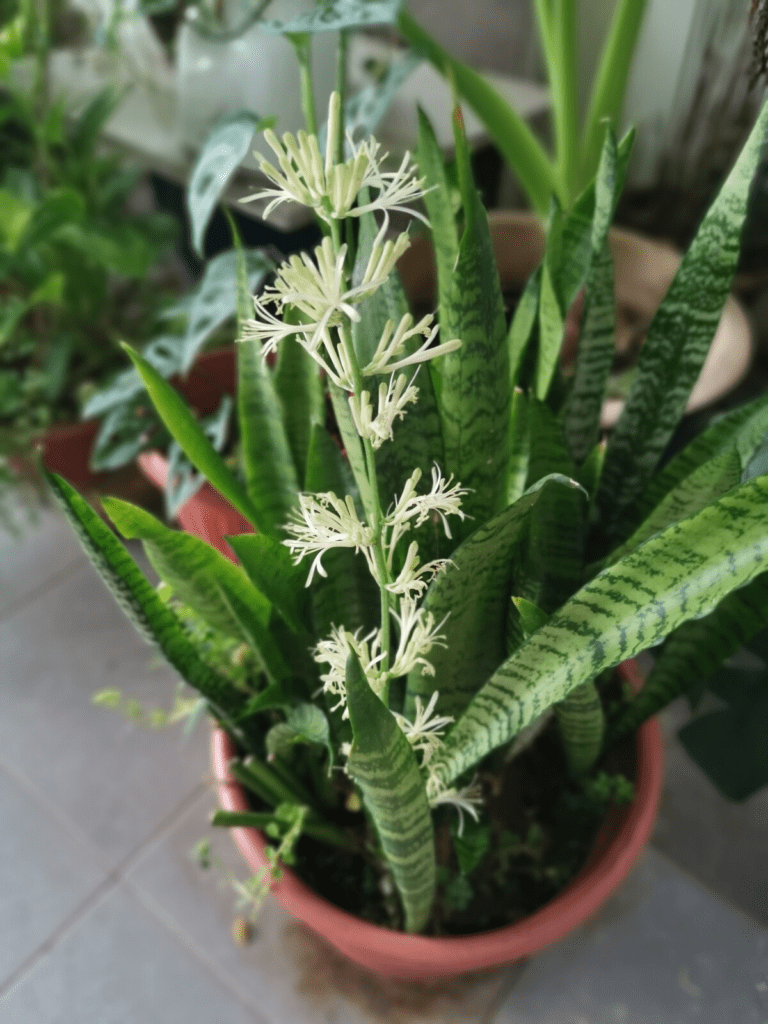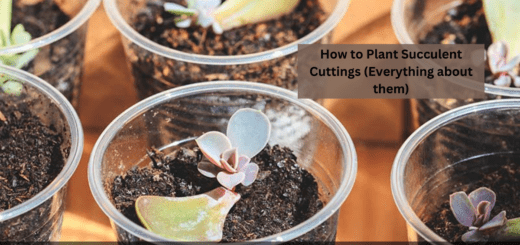Why Is My Snake Plant Drooping? Causes And Preventions
Adding the Snake Plant (Dracaena trifasciata) to your Gardening collection is great as it is a popular houseplant that produces sword-structured leaves. But the snake plant drooping will be a problem sometimes. Hey folks! I am Anna Scott, a Gardener with 15 years of gardening experience am here to help you out with the problems of snake plants.
Drooping leaves in the plant shows that the plant is not healthy as it is suffering from overwatering, inadequate soil, poor lighting, and other causes that are explained in the further guide. They look beautiful in any office or room with their swords-shaped leaves. These beautiful plants produce oxygen at night that helps you with a nice good night’s sleep. Also, they can easily survive in shades and require minimal care to fully grow.
Let’s move forward to learn about the causes of the snake plant drooping in detail. With this, its preventions will also be explained so that the plant gets saved.

Why Is My Snake Plant Drooping?
Snake plant drooping is not good for the plant, but to prevent it, you need to know about the causes of snake plant drooping in detail. It will help in fixing the issue properly. So, below are the causes:
Overwatering And Root Rot
- Snake plants face one of the issues that is over watering which causes the root rot in the plant. It is not good for the health of the plant.
- Various succulents require less watering to grow and thrive in hot climatic conditions, especially in the West African tropics.
- It shows that the plant can be easily overwatered, so you have to save your plant by only watering the plant when the soil becomes fully dry.
- Insert the finger inside the soil about 1 to 2 inches deep and if it feels dry, then only water the plant.
- Keep the gap between waterings so that this soil absorbs water and becomes dry.
- It is required to be watered every 2 to 4 weeks, especially during the summertime when the plant receives more heat.
Inadequate Soil And Drainage
- Soil plays an important role in the well-being of a plant, if the soil is well-drained and adequate, then the plant will grow at its best.
- What if the plant is receiving inadequate soil with less drainage? The plant will not be happy for long as it will cause root rot in the plant.
- It is important to fix this issue by repotting the plant in a fresh potting mix (Like cacti or succulents).
- Mix half of the perlite into the soil mix along with compost, which will enhance the fertility of the soil.
- Remove the soil from the roots at the time of repotting and put the plant in a bigger container.
- If the soil is not well drained, check if the water is directly coming out from the drainage holes when you water the plant.

Root Bound
- What is root bound? Is your snake plant’s root bound? It is one of the common problems that is faced by every house plant. It happens when the plant is overgrown and its roots are coming out from the drainage holes.
- This plant does not require much repotting as compared to other plans, but in the case of root-bound, it needs to be repotted.
- To prevent snake plant drooping, report the plant every 3 to 5 years and remove the infected roots.
- Trim the roots with the help of sharp and sterilized scissors to prevent infection.
- Last, but not least, the main purpose is to remove the clumps of roots so that it does not look messy.
Temperature Issues
- Another cause of snake plant drooping is temperature issues. When the plant is not receiving enough sunlight like the temperature is below 50°F, it will cause a drop in the plant.
- Keep your plant in a location where it receives some heat to grow.
- Place the plant near the window if you have grown it indoors so that the rise of sunlight touches the plant.

Poor Lighting
- When the plant does not receive sufficient sunlight to grow, it causes snake plant drooping. Though the plant can grow in the shade as well, partial sunlight is better for the plant.
- Without sunlight, the plant will become unhealthy and droop. So to avoid these, there are various things that you can do.
- One of the things is to provide the plant with eight hours of indirect light in a day so that the plant produces amazing foliage.
- Keep the plant away from the south-facing window for about 10 feet so that the direct sunlight does not touch the plant.
- When you move the plant to a new location, then, keep the plant in the sunlight for a few hours, then keep increasing its exposure to sunlight by an hour every day, so that the plant adapts to the new location.
- To prevent this makings of curtains block the sunlight directly, and the plant will be able to receive more sunlight or longer in the day to avoid drooping leaves.
Pests
- Pests are creatures that tend to come to plants to spoil their foliage by sucking their fluid and making the plant weaker to satisfy their hunger.
- Last, but not least, it is another cause of the snake plant drooping. Pests like aphids, spider mites, and mealybugs come near the plant for its foliage.
- When you observe black dots on the leaves, and faded leaves, it is the attack of pests on the plant.
- To prevent this make use of a home-made solution by mixing 1 tablespoon of dishwasher and 15 drops of Neem oil and one cup of water. Mix it and use the mixture on the leaves to prevent pests.
- Make use of an insecticide for the plant to prevent the pests.

How to Fix the Snake Plant Drooping?
Step 1: Inspect the Leaves
At first, it is important to inspect the leaves of the snake plant. Look for the signs of pest infestation including the following:
- Small brown spots on the leaves that show scale insects.
- Aphids cause clusters of pear-shaped blobs.
- Mealybugs tend to cause white fluff on the leaves.
- Sticky fluid shows the plant is suffering from honeydew which is secreted by aphids, mealybugs, etc.
- Co-webs will be formed from the Spider mites.
The healthy snake plant will be springy and flashy when the plant is looking faded, then move it to a location with a good amount of sunlight. Make use of neem oil or any other horticultural oil to save the snake plant.
Step 2: Check the Temperature
Another thing to fix the snake plant drooping is to check the temperature. it is because it happens because of the temperature shock in the plant. The tissues will begin to die if the plant is away from its ideal temperature requirements.
During winter, when the plant is exposed to cold drafts, there is another problem. This is because the area that has a temperature range that is below 55°F or above 90° degrees Fahrenheit is very bad for the plant’s growth.
If you check the plant has temperature shock, then move the plant to a location where it receives a temperature of about 60 to 85°F.

Step 3: Inspect the Roots
When you see that the plant is not able to stand straight, then it happens because of the sogginess in the soil that appears from the bad climatic conditions. When the soil remains wet for long, the roots are not able to take the oxygen which leads to root rot.
It will get worse if it spreads to the whole foliage and it will form soft leaves in the plant that shows the plant is not suffering from good conditions. So check the roots by lifting them upwards. Rotted roots will be brown, black, or even grey.
Also check if the plant is root-bound or not, if the roots are too tight and wrapped around each other in a dense mass, it is another issue that causes the snake plant to droop.
Step 4: Trim and Disinfect the Roots
Firstly, disinfect the pruning material with the rubbing alcohol or bleach solution. After that, trim the infected roots from the plant. Between the cuts, keep infecting the blades to prevent infection.
Step 5: Prune the Foliage
Now is the right time to remove all the rotten spots from the foliage. Saggy leaves are important to be trimmed off from the plant to improve the condition of the plant.
Choose sharp and sterilized tools to prune the foliage. Some leaves will be completely removed, whereas some will be treated. remove more than one-third of the plant’s foliage.
Start the pruning from the soil line. Do not cut the top portion of the plant as it is needed to perform photosynthesis in the plant.

Step 6: Repot Your Snake Plant
Last, but not least, now is the time to remove the old soil mix which is contaminated. At the time of reporting, remove the excess soil from the roots. Reporting will help you in knowing the right type of soil for the plant. make your mixture of soil by using 40% coarse perlite, 30% coconut coir, 20% orchid bark, and 10% worm castings will work great for the plant.
Also, Choose cactus and succulent soil for the plant. If the plant is root-bound in the current container, then make use of a big container that is 1 to 2 inches bigger in diameter than the current one. Do not keep the roots tight in the new container. Let them breathe and grow a great plant in your home garden.
Step 7: Keep it Comfortable
As you know, the plant has suffered a lot because of the drooping. so it is your responsibility to make good space for the plant to keep it comfortable. So you have to be gentle with the plant until it recovers.
This plant will be more sensitive to the sunlight now than usual. Do not let the plant come in contact with the direct sunlight. Keep checking the soil frequently to see if it is rotten or not. Also, do not fertilize the plant until it fully recovers.
Follow the suggestions for about 4 to 6 weeks and observe the plant’s growth. When the new leaves emerge in the plant, it is a good sign that the plant is going back to its normal stage.
Summing up the context
In this guide, you come to know that Drooping leaves in the plant show that the plant is not healthy as it is suffering from overwatering, inadequate soil, poor lighting, and other causes that are explained in the further guide.
They look beautiful in any office or room with their swords-shaped leaves, these beautiful plants produce oxygen at night that helps you with a nice good night’s sleep. Also, they can easily survive in shades and require minimal care to fully grow. I hope you are clear with the guide. I will come back with another informative guide soon. Till then safe gardening.
Thanks for reading! Happy Gardening!
FAQs
What does an overwatered snake plant look like?
Overwatered snake plants will cause yellow or brown color leaves in the plant with the wilted foliage. It causes root rot in the plant later. The soil will form a smelly odor. The plant will be infected by the fungus issues or the pests. So save the plant by watering it appropriately.
Can a snake plant recover from overwatering?
Yes, a snake plant can be recovered from over-watering. Remove the excess water from the container which will let the soil and the roots dry out completely for about two weeks. After that Repot the snake plant to a new location and choose a big pot for the plant. Also, use fresh soil mix for your snake plant.
How often should you water a snake plant?
Water the plant when the top inches of the soil is fully dry and that can be checked by inserting a finger inside the soil if it feels, dry then only water the plant. At the time of summer, water the plant 2-3 times. Reduce the frequency of water to one time a week during winter.


